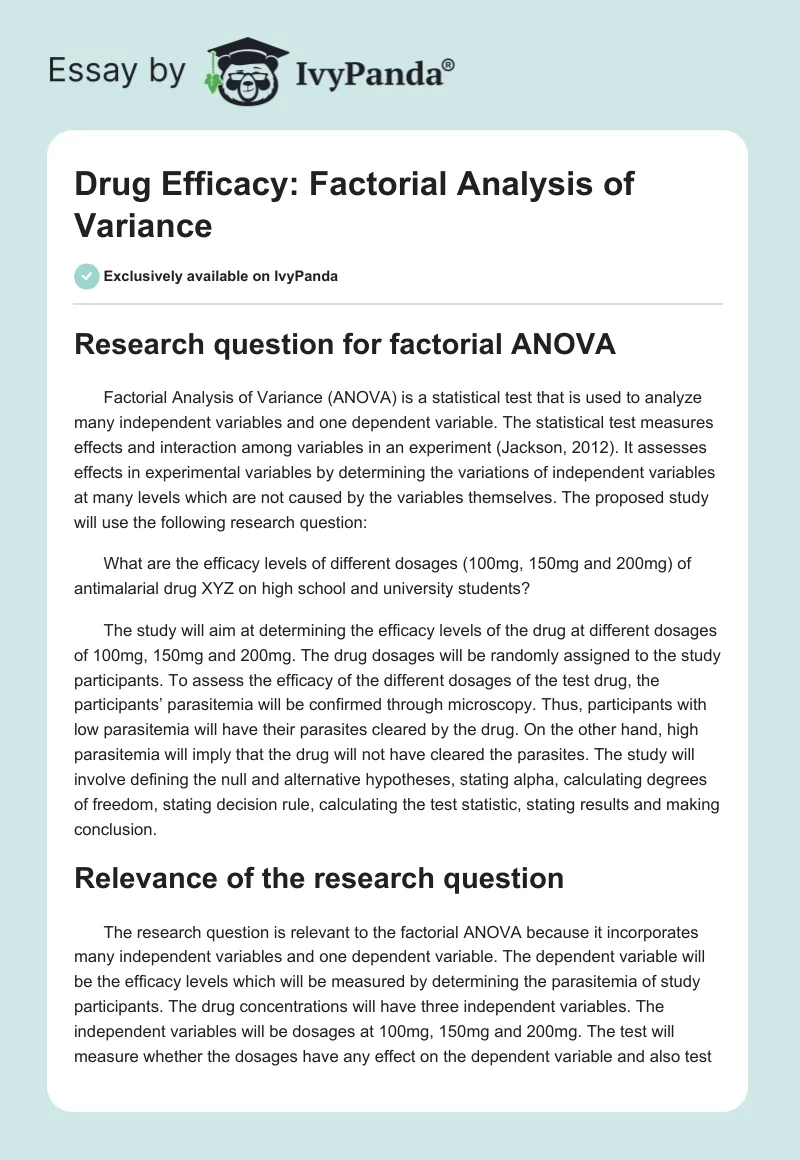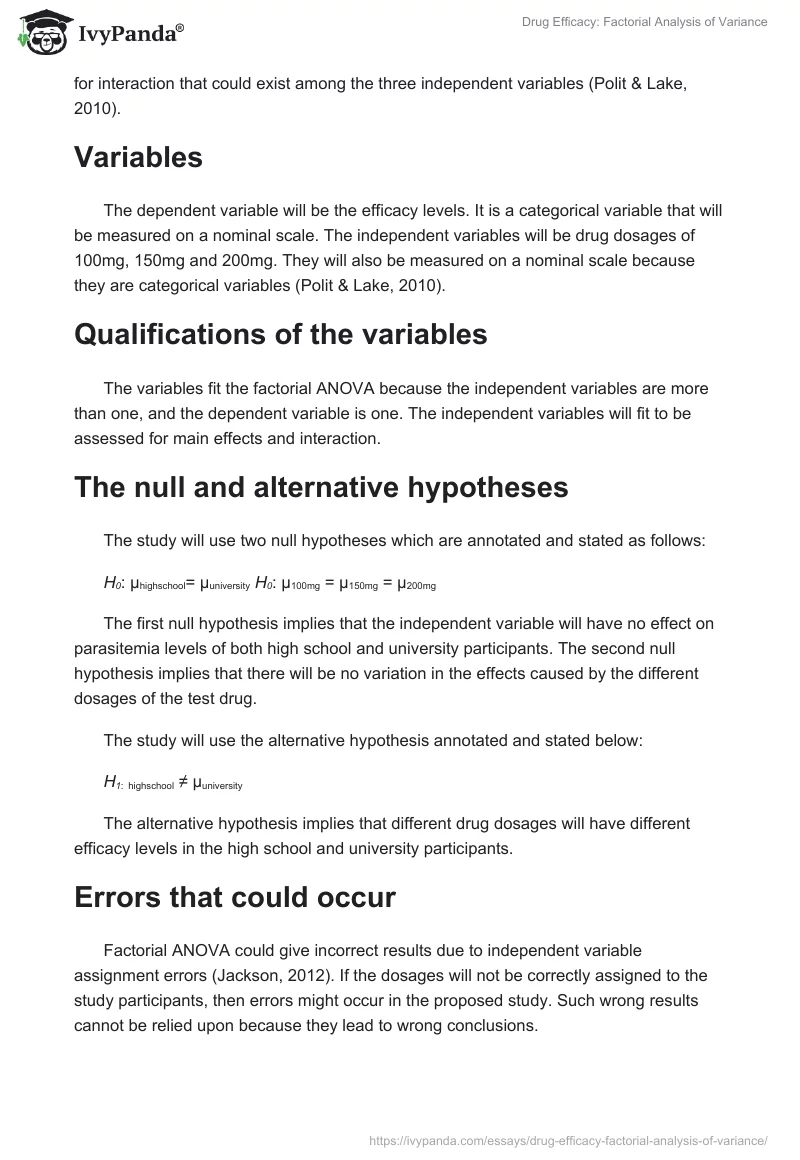Research question for factorial ANOVA
Factorial Analysis of Variance (ANOVA) is a statistical test that is used to analyze many independent variables and one dependent variable. The statistical test measures effects and interaction among variables in an experiment (Jackson, 2012). It assesses effects in experimental variables by determining the variations of independent variables at many levels which are not caused by the variables themselves. The proposed study will use the following research question:
What are the efficacy levels of different dosages (100mg, 150mg and 200mg) of antimalarial drug XYZ on high school and university students?
The study will aim at determining the efficacy levels of the drug at different dosages of 100mg, 150mg and 200mg. The drug dosages will be randomly assigned to the study participants. To assess the efficacy of the different dosages of the test drug, the participants’ parasitemia will be confirmed through microscopy. Thus, participants with low parasitemia will have their parasites cleared by the drug. On the other hand, high parasitemia will imply that the drug will not have cleared the parasites. The study will involve defining the null and alternative hypotheses, stating alpha, calculating degrees of freedom, stating decision rule, calculating the test statistic, stating results and making conclusion.
Relevance of the research question
The research question is relevant to the factorial ANOVA because it incorporates many independent variables and one dependent variable. The dependent variable will be the efficacy levels which will be measured by determining the parasitemia of study participants. The drug concentrations will have three independent variables. The independent variables will be dosages at 100mg, 150mg and 200mg. The test will measure whether the dosages have any effect on the dependent variable and also test for interaction that could exist among the three independent variables (Polit & Lake, 2010).
Variables
The dependent variable will be the efficacy levels. It is a categorical variable that will be measured on a nominal scale. The independent variables will be drug dosages of 100mg, 150mg and 200mg. They will also be measured on a nominal scale because they are categorical variables (Polit & Lake, 2010).
Qualifications of the variables
The variables fit the factorial ANOVA because the independent variables are more than one, and the dependent variable is one. The independent variables will fit to be assessed for main effects and interaction.
The null and alternative hypotheses
The study will use two null hypotheses which are annotated and stated as follows:
H0: µhighschool= µuniversityH0: µ100mg = µ150mg = µ200mg
The first null hypothesis implies that the independent variable will have no effect on parasitemia levels of both high school and university participants. The second null hypothesis implies that there will be no variation in the effects caused by the different dosages of the test drug.
The study will use the alternative hypothesis annotated and stated below:
H1:highschool ≠ µuniversity
The alternative hypothesis implies that different drug dosages will have different efficacy levels in the high school and university participants.
Errors that could occur
Factorial ANOVA could give incorrect results due to independent variable assignment errors (Jackson, 2012). If the dosages will not be correctly assigned to the study participants, then errors might occur in the proposed study. Such wrong results cannot be relied upon because they lead to wrong conclusions.
References
Jackson, S. L. (2012). Research methods and statistics: A critical thinking approach (4th ed.). Belmont, CA: Wadsworth.
Polit, D. F., & Lake, E. (2010). Statistics and data analysis for nursing research. New York, NY: Pearson.


